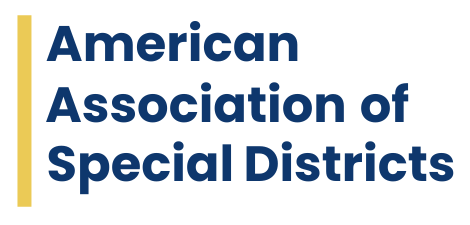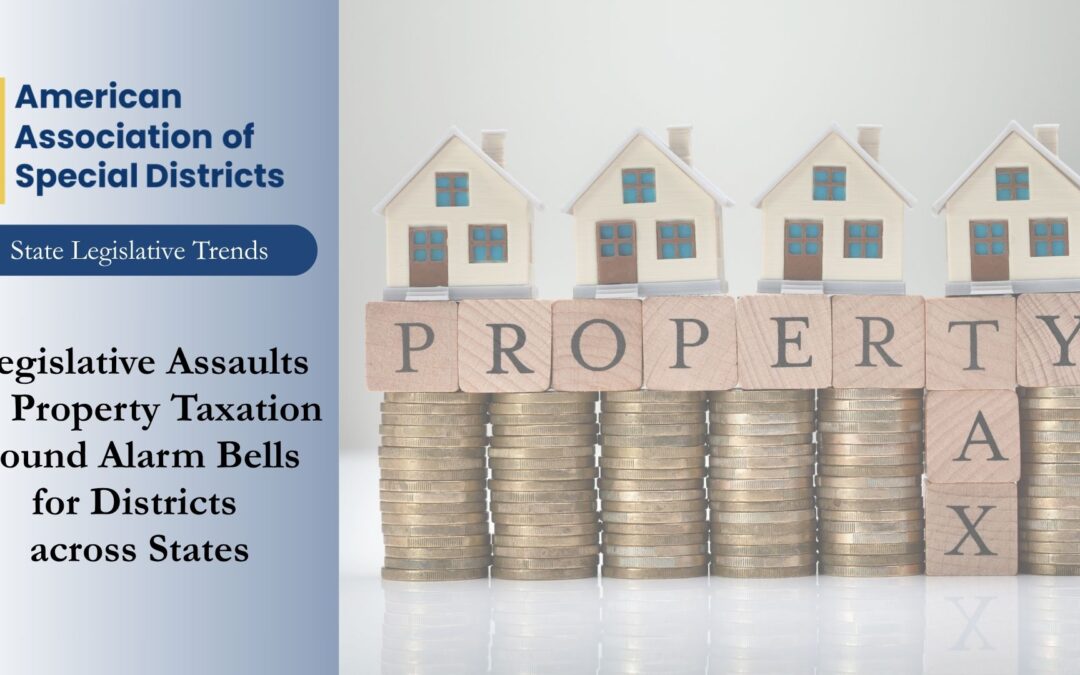Special districts across several states had the task during their 2025 legislative sessions to advocate against proposals that would deeply undercut local tax revenues.
This, as the post-pandemic push to cap or reduce property taxes continues trending more eastward across states as assessments rise with home and land value.
In this article, AASD is covering the “the Good, the Bad, and the Ugly” from in state legislative reviews to-date – in Montana where compromise happened; in Wyoming where legislators are racing ahead of state voters; and in Missouri where lawmakers played politics with local property taxation in an effort to retain Kansas City’s professional sports teams.
On June 25, 2025; the AASD Board of Directors authorized a “Task Force for Local Revenue Sustainability,” which will begin meeting in September 2025 to begin addressing this troubling trend ahead of 2026 state legislative sessions. More information will be sent via AASD Member communications.
The Good: Montana, where advocates navigated compromise.
This year, states like Montana successfully beat back harmful provisions that began in concept with an across-the-board homestead exemption. The push, which has had the support of Governor Greg Gianforte, came at a time when Montanans are anticipated to see a 20 percent spike in property taxation due to a mix of policies and economic factors.
Advocates, like the Montana Fire Trustees Association, succeeded to compromise on the harmful policy, ending with a trade-off to tax first homes less – at what is expected to be an 18 percent decrease in revenues statewide (or $700 per year for the median home), according to the Montana Department of Revenue. However, Montana legislators found an offset and proposed a higher tax on second homes and rental properties – which could cause the average second home or rental properties valued at more than $1.5 million to see a 68 percent increase in their property tax bills (or $8,250 for the median).
Montana lawmakers took steps to ensure some kind of balance in revenues. Backfill or offset policies are essential for the continuity of quality, property-tax funded services in local communities.
Gianforte signed the legislative package enacting the policies in May (MT HB 231 and MT SB 542).
The Bad: Wyoming, where lawmakers can’t help but to get ahead of voters.
Lawmakers in Wyoming continued a second year onslaught to undercut local revenues of their counties, cities, and special districts across the state. This, even as the state’s first initiative petition in 30 years will hit ballots in November 2026 to reduce residential property taxes by 50 percent.
Yet, the Wyoming legislature jumped ahead of the question with Senate File 69, which will allow a 25 percent property tax exemption on the first million dollars of fair market value. The context driving the concern: Zillow reports the median Wyoming home value to be $364,000. Governor Mark Gordon signed SF 69 in March. The policy will begin with the 2026 tax year and apply to primary residences and to Wyomingites who have lived in the state for a year.
The move is troubling, as many of Wyoming’s 600+ special districts were already gearing up to educate their constituents ahead of the 2026 General Election ballot measure, which stands to be a major financial hit for public services to the annual tune of $132 million, or 7.6 percent, statewide. For context, property tax revenues across all sectors of Wyoming government totaled $1.73 billion in 2022 – 8 percent ($140 million) was allocated to special districts.
Wyoming’s property tax road ahead is long, and will require a great deal of education and public awareness on the importance of special district services, how those services are funded, and what could happen if property tax revenues are undercut without a meaningful alternative source.
The Ugly: Missouri’s lawmakers slam property tax-funded services in a special session over storms, but mainly sports.
The Missouri General Assembly debated a number of property tax measures in its 2025 Regular Session as legislative priority, but all fell short of the passage.
That included consequential legislation, such as HB 903. The bill would have whacked tangible property tax from 33.3 percent to 18 percent over three years. The Missouri Committee on Legislative Research estimated the bill could have led to the loss of nearly $2 billion in revenue for local services from 2027 to 2029.
In its report, the Committee acknowledged that taxing authorities can mitigate the impacts if they increase the levy to other taxpayers to make up for the loss of property tax revenue resulting from this proposal – an unpopular notion, generally.
Missouri’s special districts have convened a steering committee to begin tackling how the state’s special districts can collaborate on educating lawmakers in Jefferson City on district needs and policy priorities. The conversation has also begun to rally special districts around common messaging in response to anticipated 2026 action on property taxes.
But, Missouri Governor Mike Kehoe called the General Assembly back for a Special Session on June 2 to provide relief to Missourians reeling from recent storms and to act on retaining Kansas City’s two major professional sports teams. As storm relief was a slam dunk, Special Session efforts turned to the Show Me Sports Investment Act, which would allow major incentives and 50 percent cost share to upgrade Arrowhead Stadium and move the Royals to a new stadium.
Unfortunately, as statewide incentives for one city’s professional sports teams in political trouble, the Governor expanded the special session’s focus to include property tax relief. The result was an amended MO SB 3, expected be law, which would require 97 out of 114 counties to place a question on ballots by April 2026 to provide tax credits that effectively freeze property taxes or implements a 5 percent cap on real property tax increases every two years.
As of publication time of this newsletter (Friday, June 13, at 4:45 p.m. CT), Kehoe had not signed the bill. Click here for updates on bill actions.
In 2023, then-Governor Mike Parson signed MO SB 190 (2023), which allowed Missouri counties to adopt, through elections, a property tax freeze for Missourians age 62 and older. As of Spring 2025, all 114 counties were successful to pass the local senior tax freeze measures.
SB 3 has the potential to significantly limit special districts’ ability to keep up with increasing demand for service over time and negatively impact many special districts’ ability to provide essential services across the state.
As SB 190 set the precedent, it is perhaps more urgent now, than before, to unite Missouri’s special districts over a common issue that stands to arbitrarily impact fire, library, drainage, health, hospital, road, and other services across the state. Further, Missouri’s special districts, like Wyoming’s, also have a big lift ahead to educate their constituents on the importance, value, and efficiency of special district services.
Get involved.
Are you a special district leader seeking to build a network for advocacy and resources in your state to address issues like property taxes and more? AASD enjoys collaborating to build district coalitions and more. Get in touch! Email us at contact@americasdistricts.org.
This article was orginally published in the AASD Special Districts Download, the Association’s biweekly member newsletter. Click here to give AASD membership a three-month trial run and begin receiving the “Newsletter for a Special Purpose” in your inbox every other Friday.

